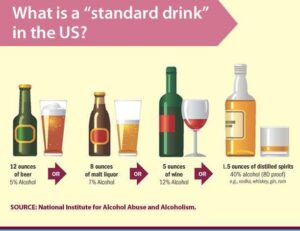Study finds even low levels of alcohol consumption increases risk of cancer deaths among older adults

By Melissa Patrick
Kentucky Health News
A new study found that even light drinking was linked to an increase in cancer deaths among older adults, and even greater among those with health-related or socioeconomic risk factors.
“We did not find evidence of a beneficial association between low drinking and mortality,” lead study author Dr. Rosario Ortolá, an assistant professor of preventive medicine and public health at Universidad Autónoma de Madrid, told the New York Times.
 The study defined light drinking as a mean alcohol intake of up to 20 grams a day for men and up to 10 grams a day for women. In the U.S., one “standard” drink contains roughly 14 grams of alcohol, which amounts to 12 ounces of regular beer, 5 ounces of wine or 1.5 ounces of stilled spirits.
The study defined light drinking as a mean alcohol intake of up to 20 grams a day for men and up to 10 grams a day for women. In the U.S., one “standard” drink contains roughly 14 grams of alcohol, which amounts to 12 ounces of regular beer, 5 ounces of wine or 1.5 ounces of stilled spirits.
The United Kingdom study, published in JAMA Network Open, tracked 135,103 adults aged 60 and older for 12 years, looking at the association of drinking with all-cause, cancer and health-related deaths, along with health-related and socioeconomic risk factors.
And in an effort to address some of the biases that can skew results, the researchers said they compared their drinkers to occasional drinkers, defined as those who had less than about 20 grams of alcohol per week, instead of abstainers. That’s because people who have stopped drinking may have done so because they were already ill or using medication, which could make drinking look less harmful.
The study found greater risk in those who were moderate and heavy drinkers.
For moderate drinking, defined as between 20 and 40 grams of alcohol a day for men and between 10 and 20 grams for women, the researchers found an association with a higher risk of death from all causes and from cancer.
For heavy drinkers, defined as more than 40 grams a day for men and more than 20 grams a day for women, they found an association with higher deaths from all causes, cancer and cardiovascular disease.
Further, they found that drinking mostly wine and drinking only with meals “showed small protective associations with mortality, especially from cancer, among drinkers with health-related and socioeconomic risk factors, and these two drinking patterns attenuated the excess mortality associated with high-, moderate-, and even low-risk drinking.”
The researchers suggest that the protective nature of drinking mostly wine or only drinking alcohol with meals has little to do with the alcohol itself: “These findings suggest that the less detrimental associations of alcohol intake from wine or during meals are not due to alcohol itself, but to other factors, including nonalcoholic components of wine, such as antioxidants, slower absorption of alcohol ingested with meals and its consequent reduced alcoholaemia, as well as spacing drinks when drinking only with meals, or more moderate attitudes in individuals who choose to adhere to these drinking patterns.”
The 2025 Dietary Guidelines for Americans is expected to be released in the coming months. The current guidelines for adults of legal drinking age suggest that men should limit alcohol consumption to two drinks or less per day and women should limit their consumption to one drink or less per day.